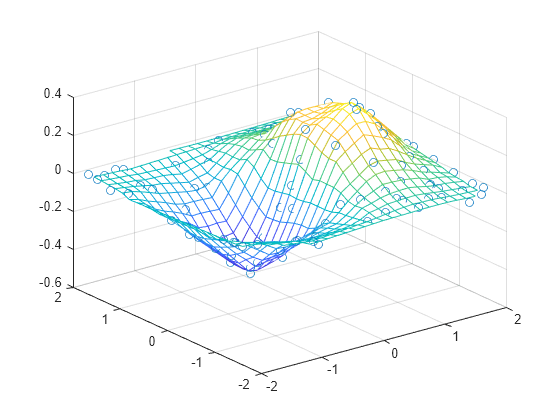TriScatteredInterp
(不推荐)对散点数据插值
不推荐使用 TriScatteredInterp。请改用 scatteredInterpolant。
说明
TriScatteredInterp 用于对二维或三维空间中的散点数据集执行插值。对于由位置 X 及对应值 V 定义的散点数据集,可以使用 X 的德劳内三角剖分对其执行插值。这将会生成 V = F(X) 形式的曲面。可以使用 QV = F(QX) 在任意查询位置 QX 计算曲面,其中 QX 位于 X 的凸包内。插值 F 始终穿过样本定义的数据点。
创建对象
语法
描述
F = TriScatteredInterp 创建一个空的散点数据插值。
F = TriScatteredInterp(___, 指定用于数据插值的插值方法 method)method。您可以使用以前的任何输入参量组合。
输入参量
属性
对象函数
要计算插值,请用 Monge 格式 Vq = F(Xq)、Vq = F(Xq,Yq) 或 Vq = F(Xq,Yq,Zq) 来表示语句,其中 Vq 为查询位置处的插值,Xq、Yq 和 Zq 为点位置向量。
示例
详细信息
扩展功能
版本历史记录
在 R2009a 中推出
另请参阅
triangulation | delaunayTriangulation | scatteredInterpolant | interp1 | interp2 | interp3 | meshgrid
